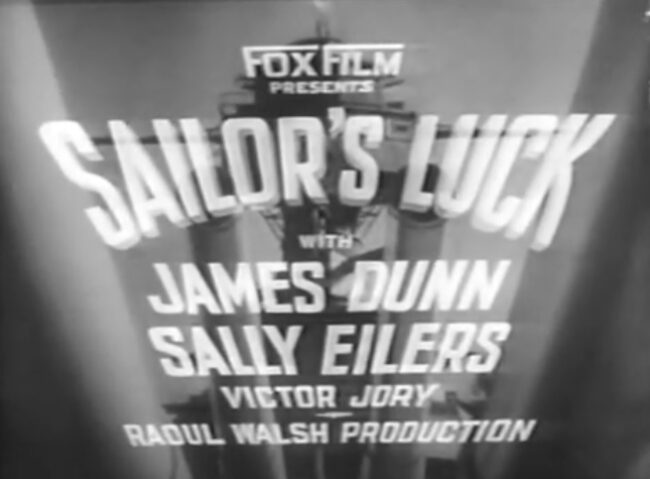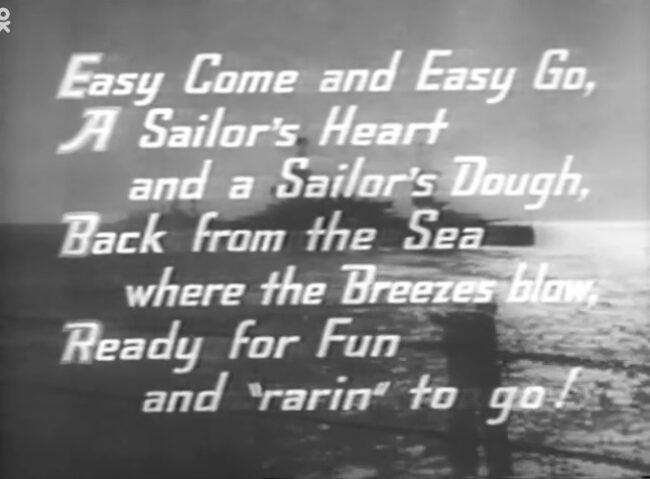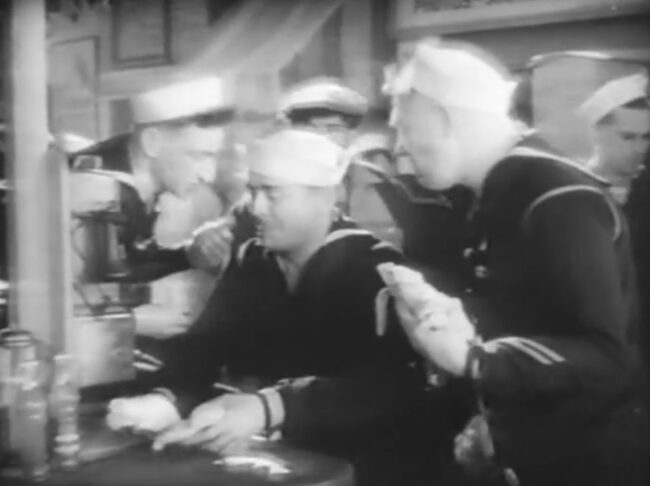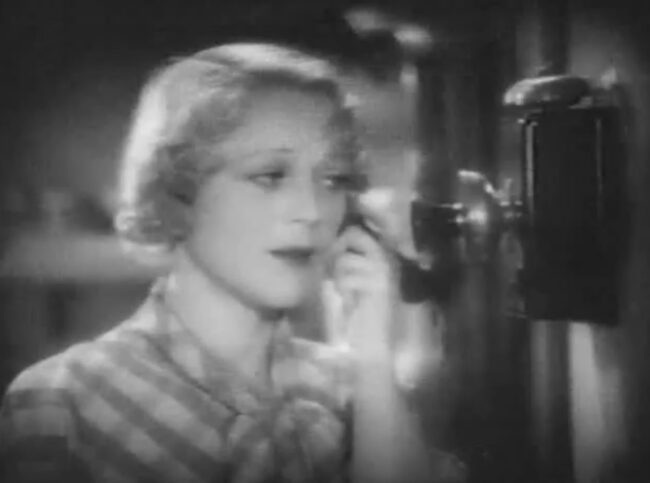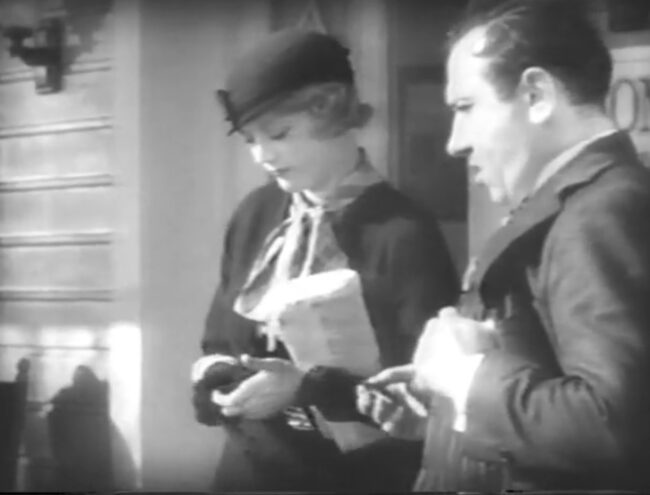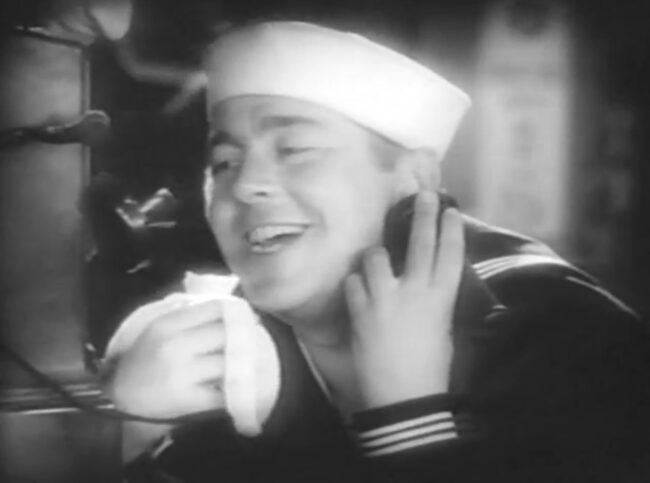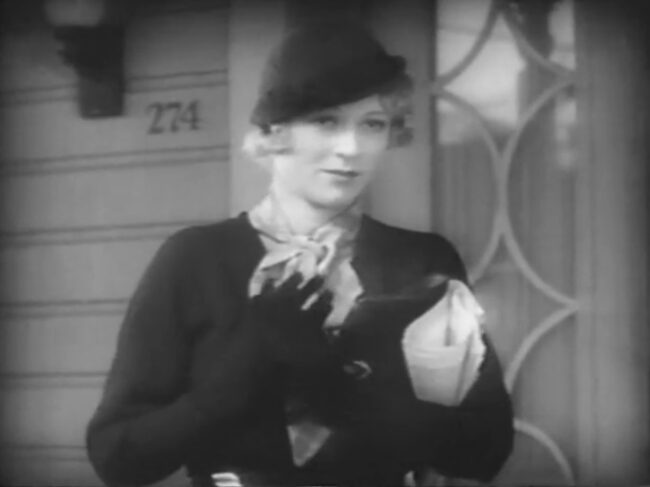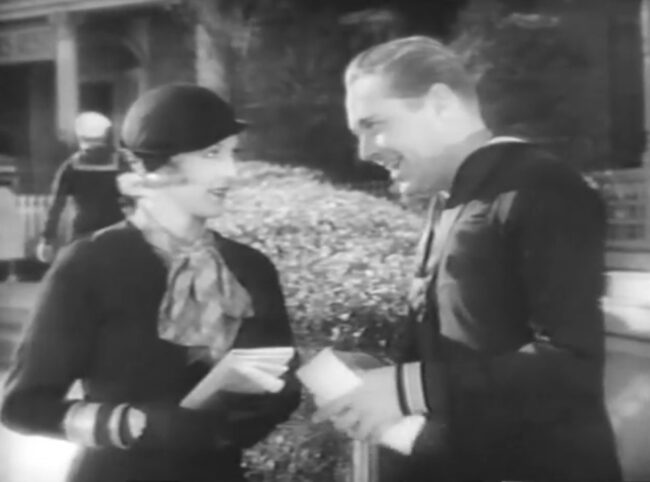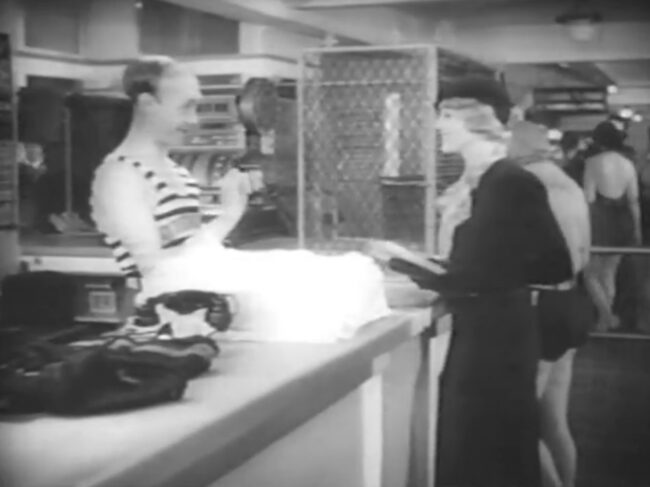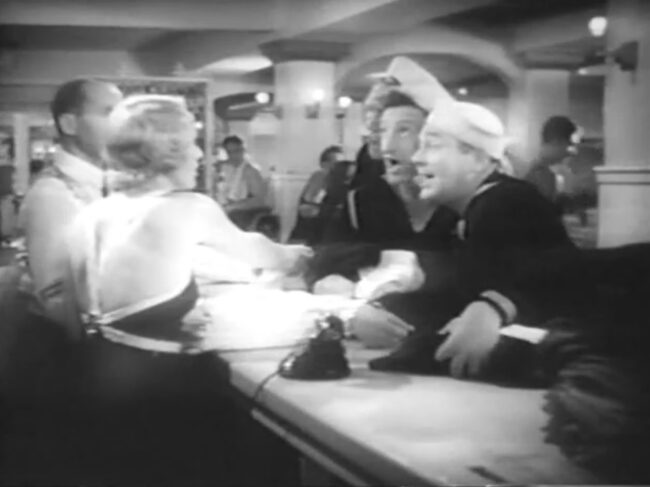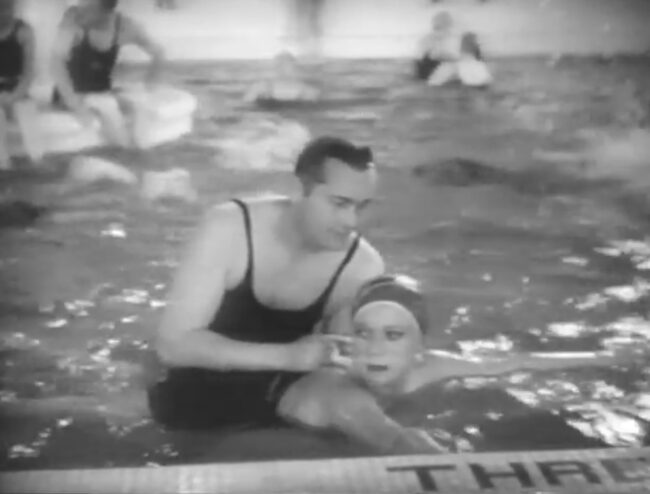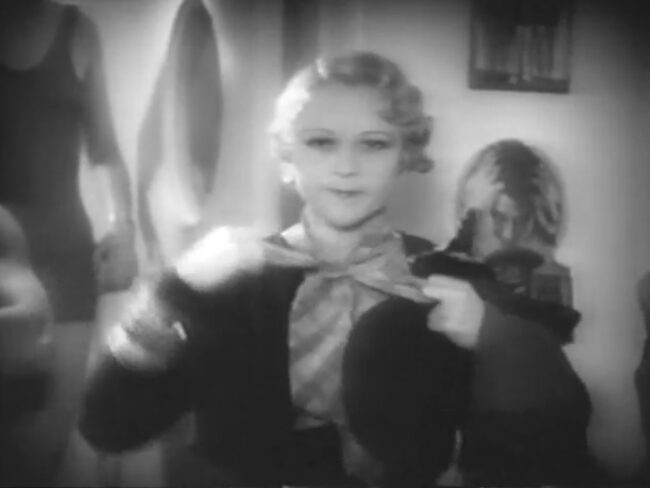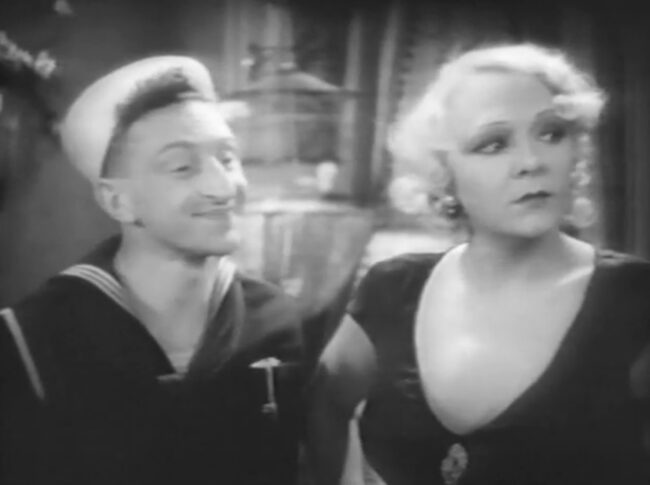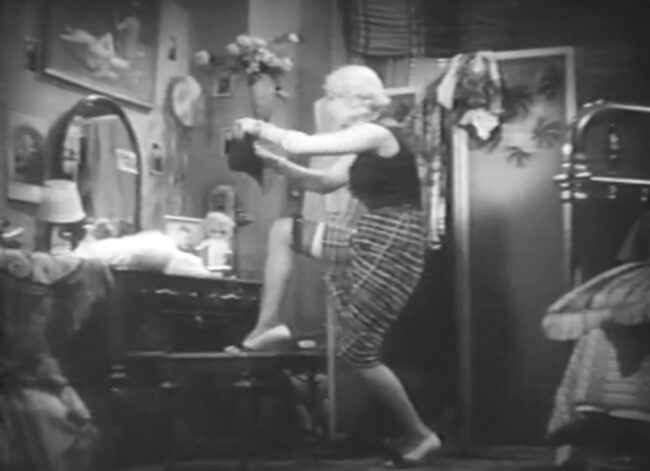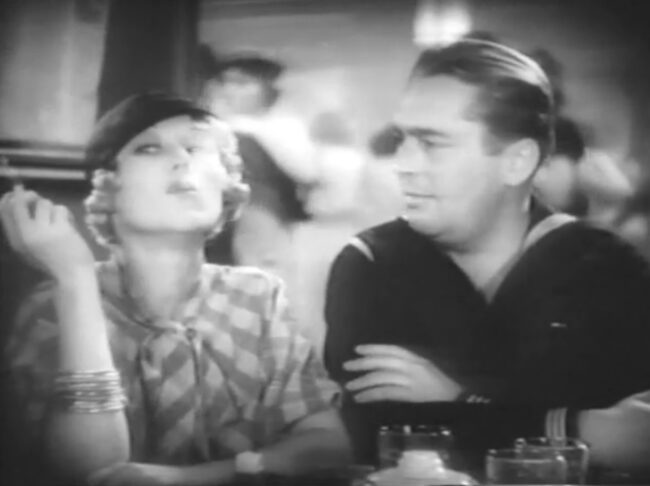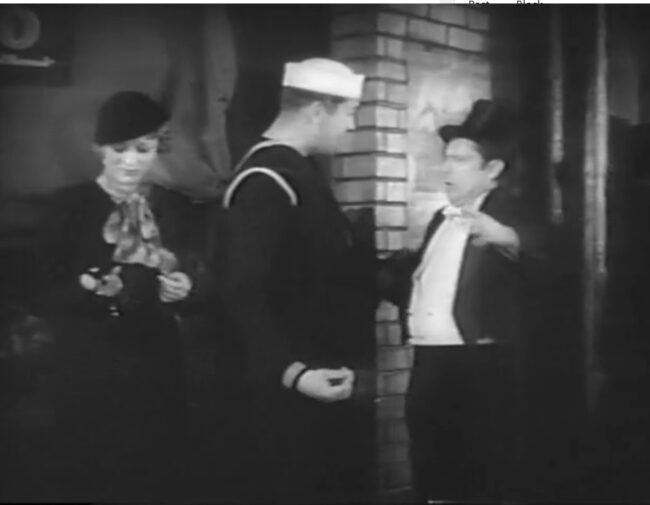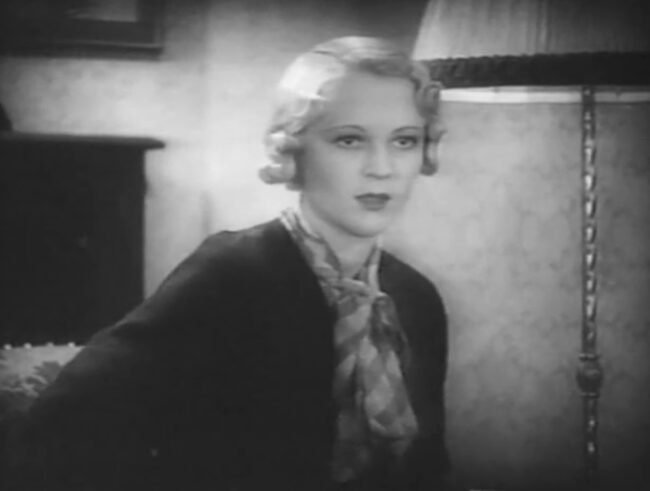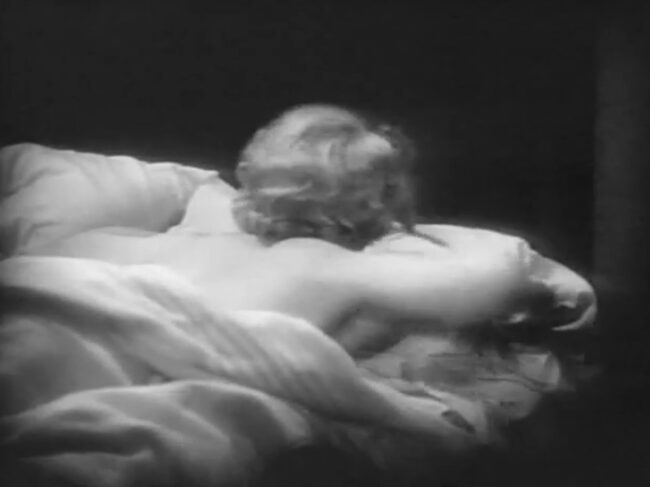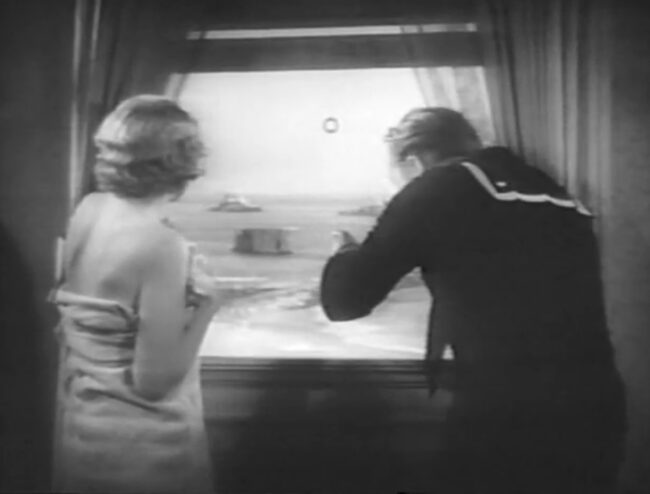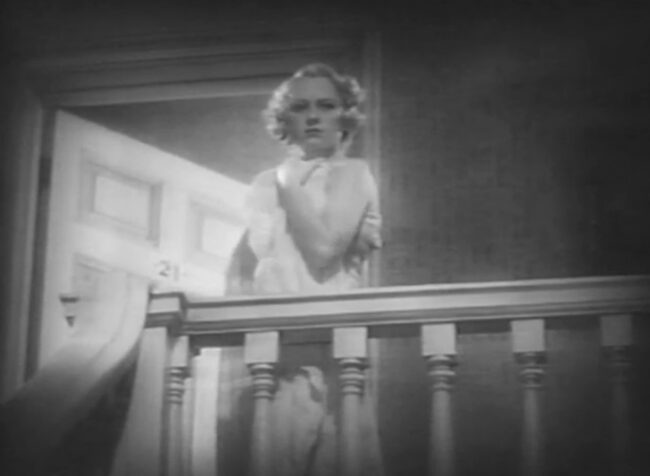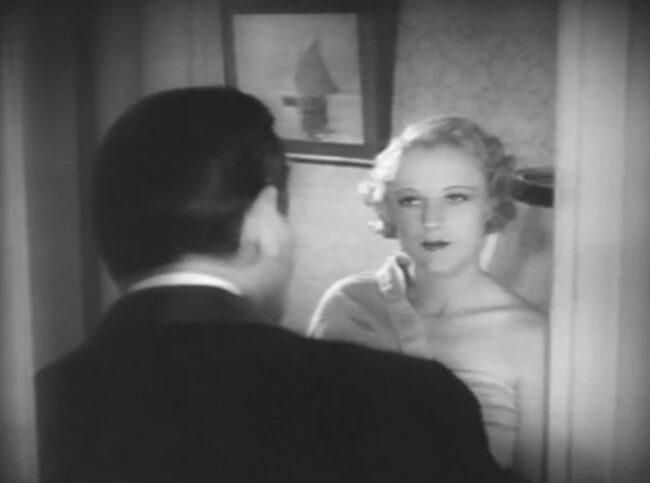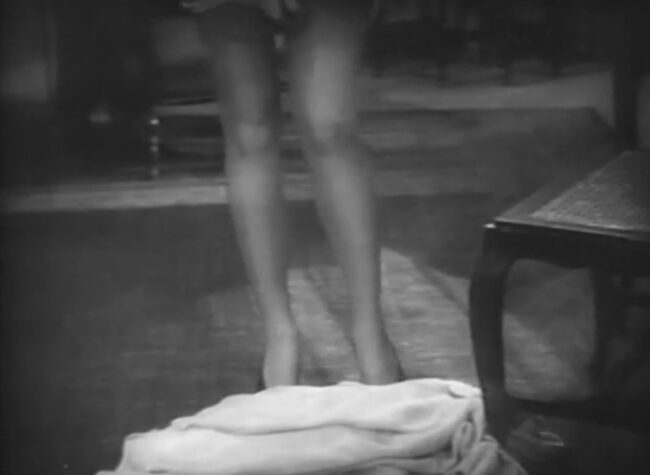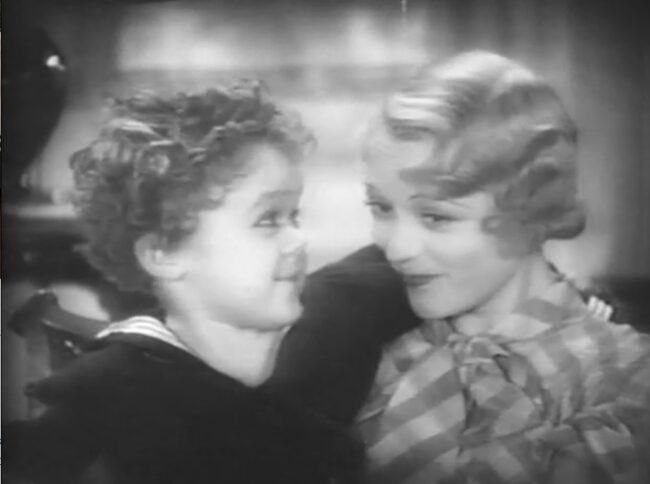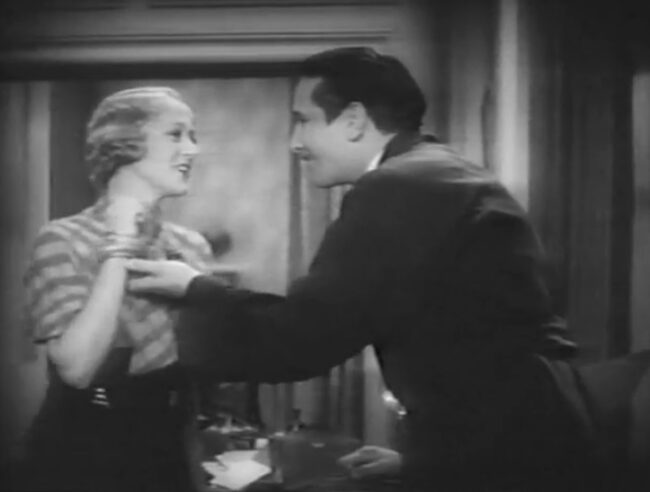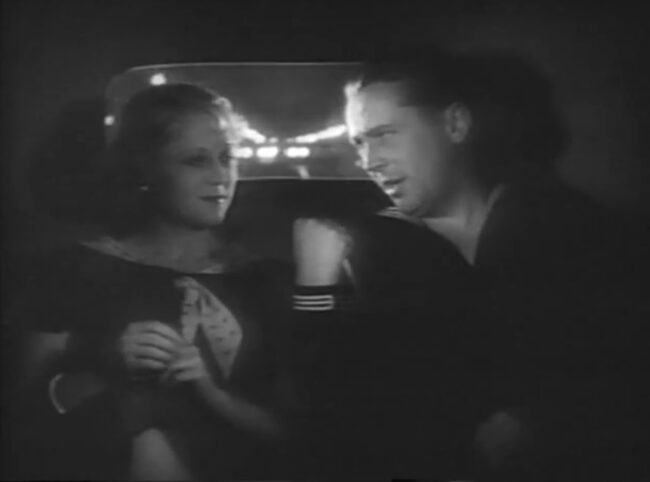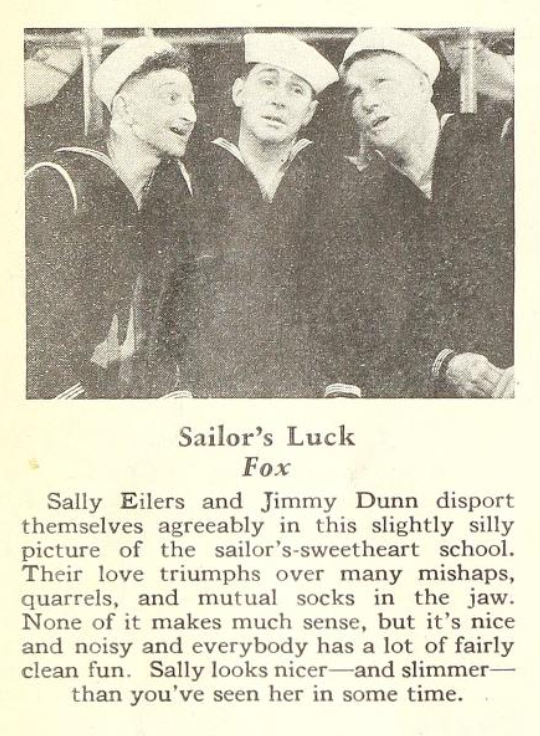Dislike
Starring: James Dunn, Sally Eilers, Victor Jory, Sammy Cohen, Frank Moran, Esther Muir, Will Stanton, Armand ‘Curly’ Wright, Jerry Mandy, Lucien Littlefield.
Directed by: Raoul Walsh
Released by: Fox Film
Runtime: 79 minutes
Release date: March 10, 1933
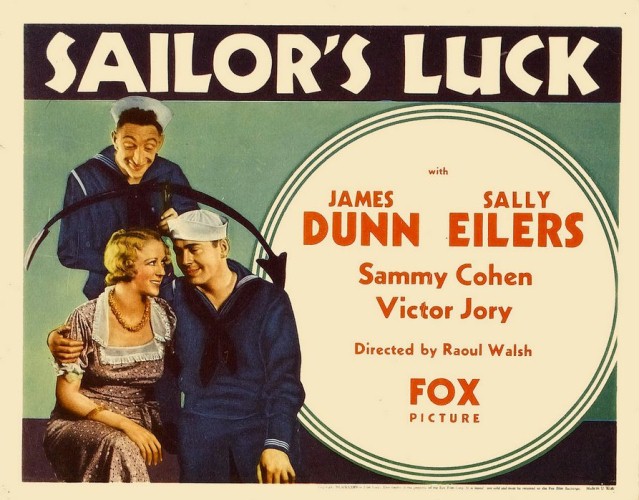
Availability
Sailor’s Luck was a Fox Film release so, in an act of cosmic irony no one could have predicted, it is now owned by the Disney corporation.
You can rent it or purchase it digitally over at Amazon.
As of this writing, it is currently appearing at RareFilmm.
Proof That It’s Pre-Code
- Strap in, folks, this is gonna be a long one.
- Early in the film, it’s clear there’s been a line cut where the sailors are discussing what their feet are doing when they get to Min’s house.
- It’s a movie with sailors, so there’s a pansy stereotype working at the pool who is so extreme that he makes Franklin Pangborn look like Clint Eastwood. Dunn even mutters under his breath ‘pansy’ in pig-latin.
- This is the second pre-Code film I’ve seen, of the 600 or so I’ve watched, that features a fart joke.
- The film has all the cynicism of men hiring women employees that you would expect from the time.
- “Can I learn that fast?” “Say, I’m the fastest worker in the navy!”
- Our sailors go around and making jokes at the expense of Italian and Chinese immigrants. Man, the waiters at the Chinese restaurant aren’t even given any lines while people hurl insults at or around them.
- When a cab drives past him, James Dunn’s outstretched hand changes into another well-known gesture.
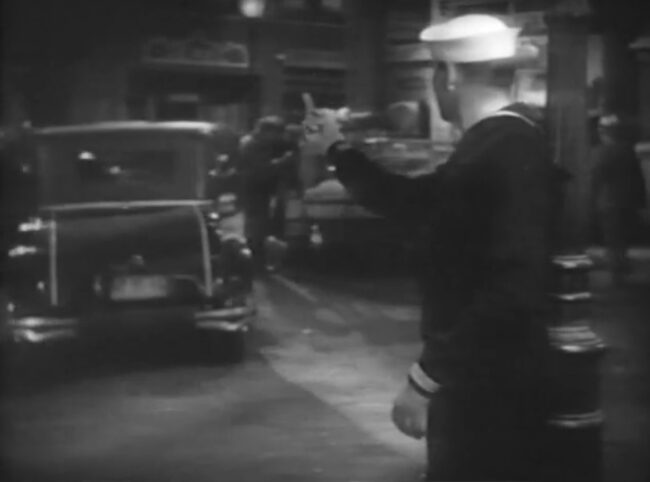
- “I didn’t recognize you with your clothes on!”
- When Sally Eilers refuses to sleep with him, James Dunn gives her a ribald spanking. It’s even worse than it sounds, I’ll go into it more below.
- Eilers’ character sleeps in the raw and then wanders through the next scene with Dunn in nothing but a bed sheet. The movie even cleverly plays with audience expectations, showing us her bare legs, the bed sheet on the ground, and panning up only to reveal that she is now in the process of getting dressed.
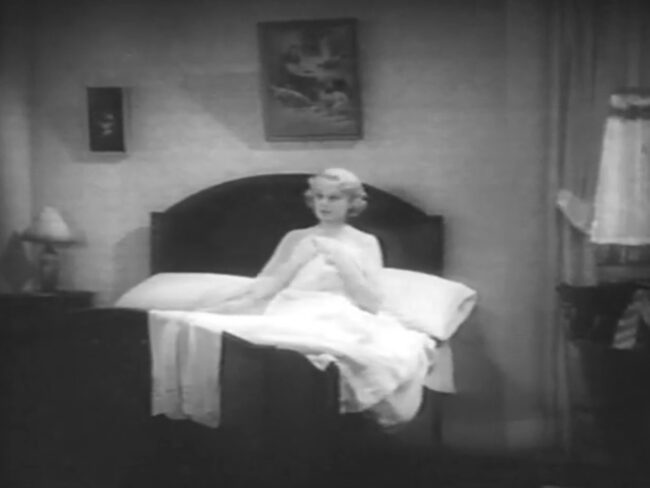
- The character of Hemingway wasn’t just a drunk, he’s practically pickled.
- A dad berates his little boy: “What happened to my hat?” “I was playing Democrats and Republicans.” “What does that have to do with my hat?” “The hat was a Republican!”
- Another gag about sailor stereotypes, we learn that Jimmy went lingerie shopping and the clerk asked if the underwear was for him.
Sailor’s Luck: Failures Duck
“You didn’t forget that little spanky spanky I gave you last night, didya?”
There’s this great 1931 drama by Frank Borzage called Bad Girl. Great flick; I recommend you check it out. It starred Sally Eilers and James Dunn as a couple who struggles with trying to make one another happy only to find that their self-sacrifices lead to a spiral of frustrations and despair. It’s fantastic. Best Picture nominee. Out on blu-ray.
I mention it because Sailor’s Luck, made a year later and still starring Eilers and Dunn, plays like a burlesque of Bad Girl, an extended riff on how emotions are for suckers and if the dame doesn’t put out, then maybe you just gotta stick around a few more days and call it love. It’s a grossly cynical movie, one that understands how power structures mercilessly batter women and men and pry them apart, but also one that gleefully derides any ‘others’ who happen to come along: homosexuals, foreigners, et al.
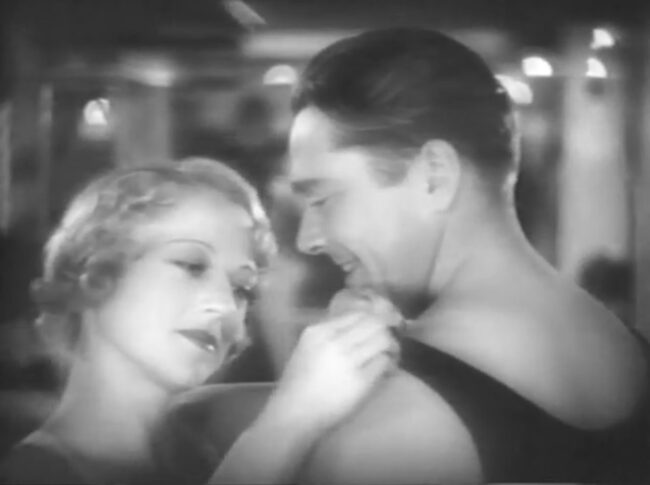
Military comedies were common by 1933. After the success of 1929’s The Cockeyed World (notably also directed by Raoul Walsh), lewd movies about soldiers and sailors were churned out, most offering plenty of dirty jokes and fiery gals who could take some palookas for a spin. (See stuff like Goldie or Hot Pepper.) Sailor’s Luck is firmly in that tradition, offering raised middle fingers and easy dames all before shore leave is cancelled. These kind of military comedies would mostly disappear post-1934– hard to tell the stories of sailors hunting down easy lays when no one has sex outside of marriage– but musicals like On the Town and Hit the Deck took the ideas and made them family-friendly.
But it’s 1932 (the movie’s release was delayed a year, according to IMDB), and we’re in comedy hell. The film still has the hard nosed sailors on the hunt, but everyone they run into is a stereotype– or sometimes even just a stereotype of a stereotype. Sailor’s Luck is a film filled with stock characters and stock situations and stock gags. Much of the film, especially in the first half, comes down to watching bit players do their bits.
Dunn is accompanied by two other sailors, Barnacle (Sammy Cohen) and Frank (Bilge Moran). Frank is a dumb lug, while Barnacle is a slapstick-prone goofball. Early in the film, we’re treated to about five minutes of Barnacle jumping in a pool in various “silly” ways while an appreciative crowd gathered around laughed. I’m glad they were appreciative. Then there’s Will Stanton as Hemingway, a drunkard who seems to have fallen into the movie from a Looney Toons short. If I were ever as drunk as his character is in this film, I would be dead, dead, dead.
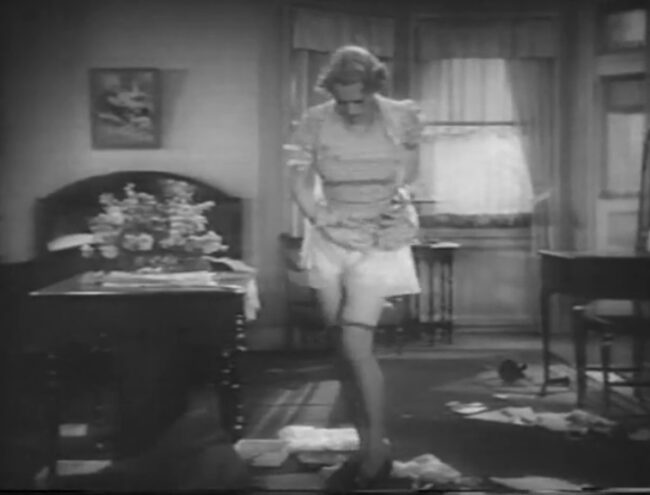
As annoying as these characters and many others are, it’s hard to deny that the film’s central romance is rather unpleasant. Eilers plays Sally Brent, a beautiful girl down to her last dime. She goes to work as a swimming instructor at a local pool, but the lascivious manager is so eager to see her in a swimsuit that he doesn’t even mind that she can’t swim. In comes braggart sailor Jimmy Harrigan (Dunn) who offers to teach her during his lessons; his sailor friends soon make trouble and she’s fired. He then takes her out for chop suey and then offers to get her an apartment for the night.
He invites himself up. She gets into bed. He sits across the room. The tension in this scene, where he clearly expects repayment in physical affection, is palpable. When he realizes that she doesn’t want to put out, he angrily draws her to his chair, flips her over and, as men so often do in these kind of movies when they don’t get what they want, he gives her a ribald spanking. And, because of the kind of movie this is, she is thrilled that he didn’t just force himself upon her and falls in love with him instantly.
While I find much of Sailor’s Luck tedious, I can’t deny that Eilers emits a fine voltage from her performance. She and Dunn have chemistry, it’s only that her character feels ‘poor’ not in the “Sylvia Sidney” way, but in the “Norma Shearer” way, which shorts out any tension. Does that make any sense? It does to me.
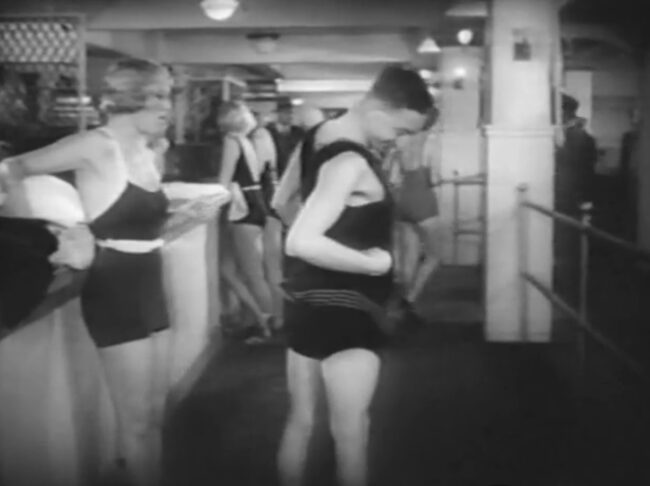
There are a lot of interesting observations of male power dynamics in Sailor’s Luck, which put it firmly in with movies like She Had to Say Yes in just how bleak it was to be a woman during the Depression. What both of these movies say is that women have no good choices and life (and survival) come from making the least bad choice every time it comes up.
Besides Jimmy’s braggadocio and the pool owner’s lechery (carried out behind the back of his wife), there is also the apartment’s owner, Baron Portolo (Victor Jory), who seems to run in organized crime circles and has a side business running dance marathons. He keeps photos of the past winners in his bedroom, if that helps you understand just how he runs them.
Portolo keeps Sally and Jimmy separated for much of the film’s second half by lying, intimating, and threatening. He’s such an interesting, unapologetic kind of skeezeball that the film serves him up as a contrast to Jimmy. While Jimmy is hotheaded and jumps to conclusions, Portolo is rich and scheming. Both men have been with a bevy of women, but Jimmy at least promises to be true to Sally. I guess that’s what is supposed to make him a better man, but, frankly, they are both detestable in so many ways that its hard to go along with the film’s sympathies towards Jimmy.
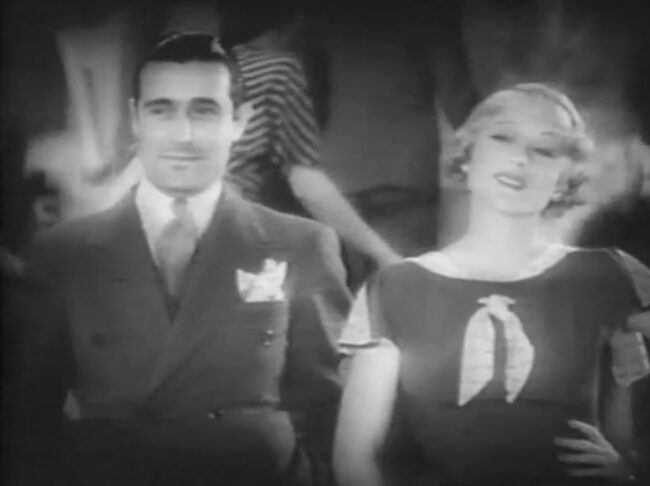
The best scene in the film comes when Jimmy, in yet another fit of jealous rage, presents Sally with the fancy underwear that he’d purchased for her and then attempts to rip it to shreds. He apparently bought nice enough underwear that he can’t get through the panties, so he stomps out of the room in a fit. Sally stomps around too, throwing the remains of her gifts around in anger and is about to do the same with the underwear until she examines it and pulls it up under her skirt. This detail, the idea that no matter how angry and frustrated you are, no matter how much your life has completely fallen apart in the past few minutes, good underwear is good underwear, is the strongest point the film makes.
My complaints from the film filter mostly from the comedy angles. Director Raoul Walsh is a good director and adds a lot of texture to Sailor’s Luck, including Min (Esther Muir), the fortune teller who all the other sailors make their plans around because they know she’ll be a good time. But even with the nuances and the nasty observational work, Walsh is clearly playing this one to the bleachers, a crowd-pleaser for a crowd that disappated nearly a century ago.
Sailor’s Luck is a fairly unpleasant picture to watch, but it helps set the tone for what studios were willing to produce at that time. It’s up there with movies like Smarty and George White’s Scandals for having a unique kind of nastiness embedded in them. Whether that’s worth sitting through is up to you.
More Images
Trivia, Miscellany & Links
- Not to be confused with the 1934 British comedy, Luck of the Sailor.
- Partway through the film we see one of the sailors reading a copy of The American Mercury in bed. The magazine had a fascinating history; at the time of this film’s release, it was still being edited by its founder, H.L. Mencken, and featured writers of all stripes and, notably for the time, races, including figureheads of the Harlem Renaissance. The magazine would spawn the television show “Meet the Press” in 1947 but, after a sale in 1950, it turned into a right-wing publication featuring writers like William F. Buckley. The magazine eventually became a pro-Nazi mouthpiece and rabidly antisemitic. The magazine ran until 1980 and there have been attempts by Neo-Nazis to revive it in intervening years. (Wikipedia.)
- Mordaunt Hall called it, “a breezy pictorial yarn”. (New York Times.)
- This film was revived for a showing a few years back by Dave Kehr, the director of MoMA. The movie was well received there, with Farran Nehme even declaring it, “fabulous.” (Self-Styled Siren.)
- Variety granted the movie all of three paragraphs for a review, noting “few films have descended to the low-brow depths of this one in chatter and action.” They also highlight the apartment scene between Dunn and Eilers, calling it a low level mark for the comedy genre. (Variety.)
- Other links:
More to Explore
What is Pre-Code?
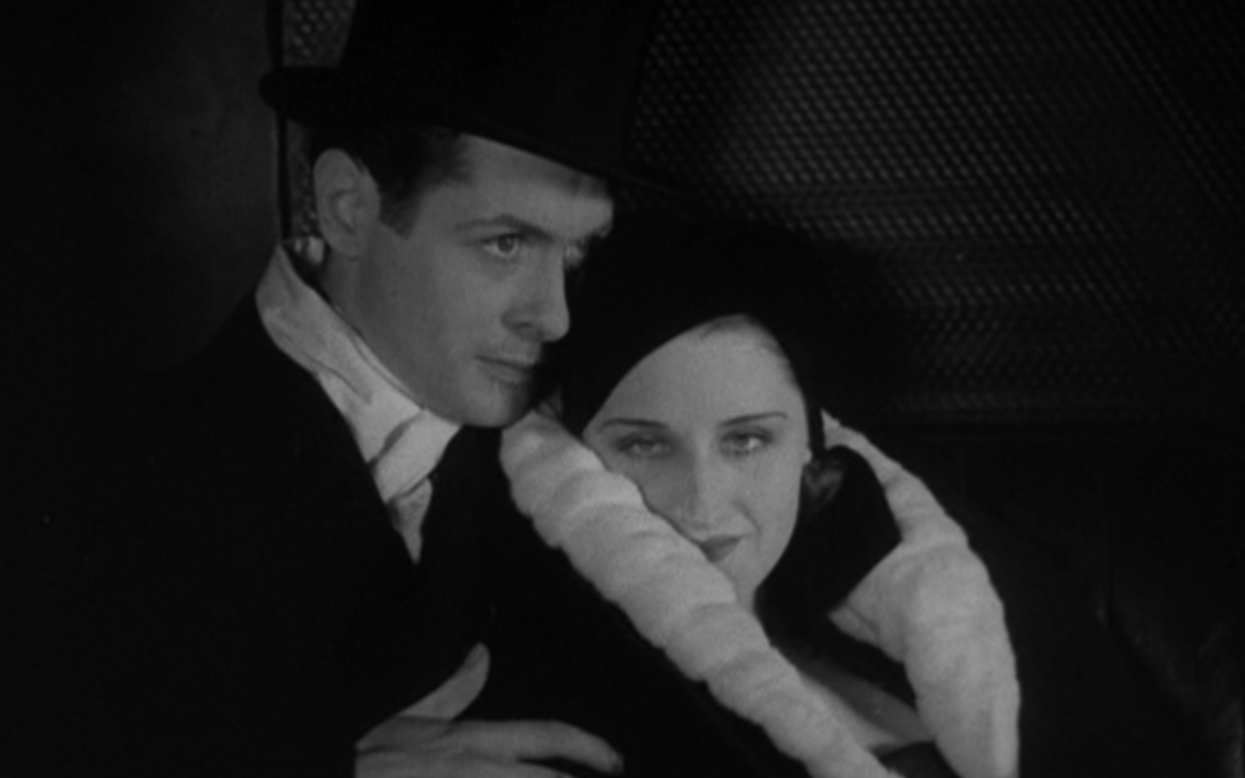
Click to learn more about pre-Code Hollywood, 1930-4, when movies were sexy, smart and sophisticated.
Index of Film Reviews
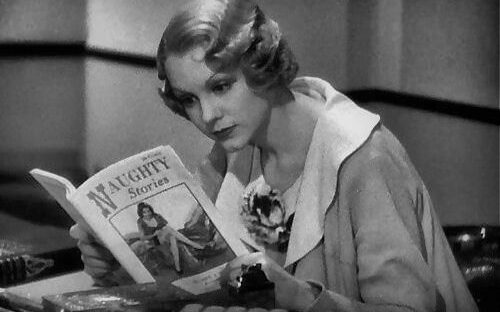
Browse all of the movie reviews on the site as well as schedules and pages that detail the world of pre-Code.
Explore the Pre-Code Era
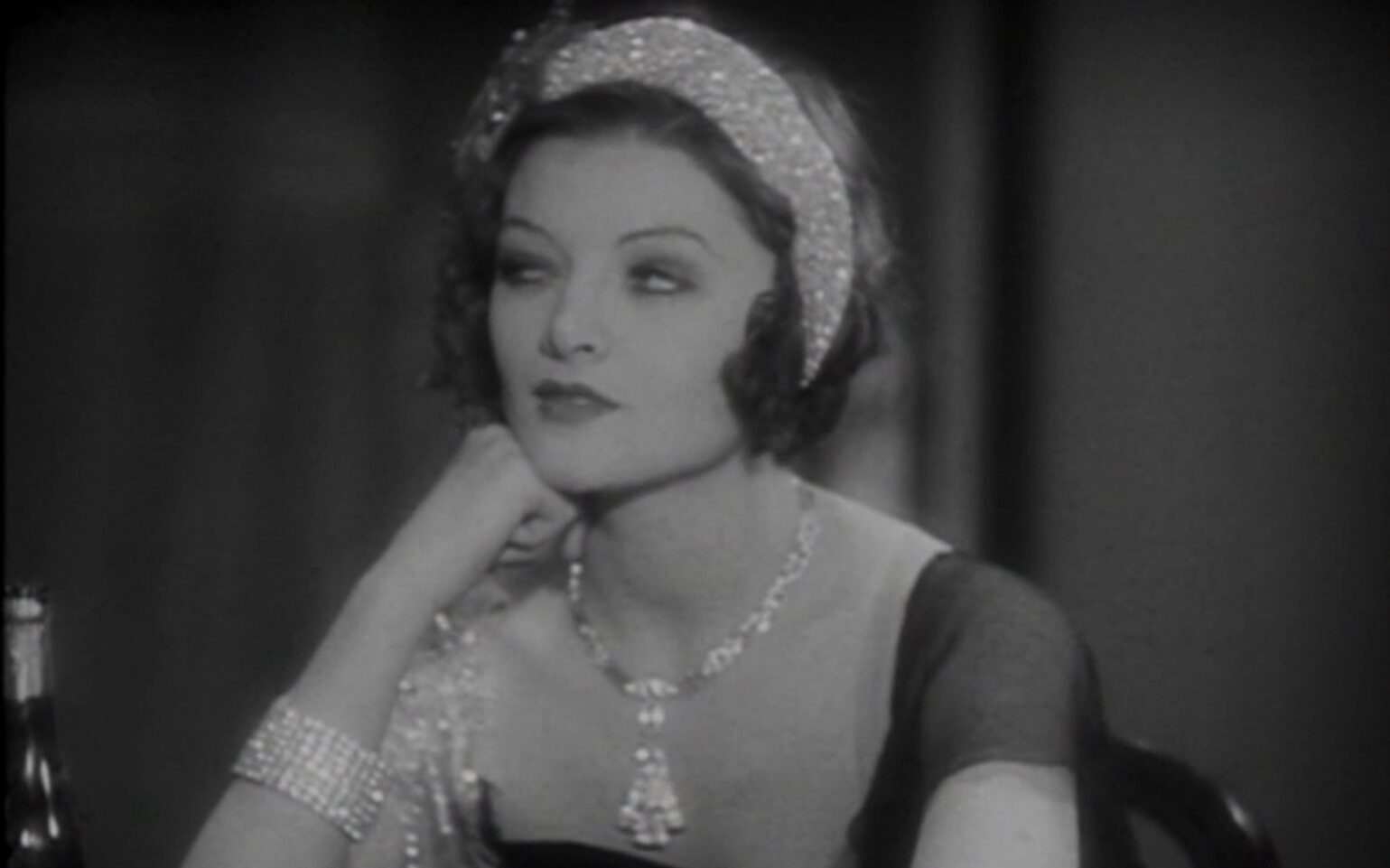
Dig through the pre-Code era through its highlights, its biggest hits, its essential films, and more.
